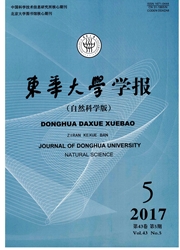

 中文摘要:
中文摘要:
采用可视化Basic程序设计语言(VBA)建立虚拟的三维树冠模型,并使用计算流体动力学(CFD)模拟的方式,研究了不同孔隙率和风速下,树冠内部的流场特征和流动阻力.用光学孔隙率及体积孔隙率来表征树冠复杂的形态结构,并讨论了树冠形态结构参数对树冠流动阻力的影响规律.结果表明,树冠的阻力系数与光学孔隙率满足近似二次多项式关系,通过对数值模拟计算结果回归分析,给出树冠流动阻力系数与光学孔隙率的关系式,在真实条件下树冠阻力系数的试验数据对比的基础上,提供了一个对真实树冠阻力系数进行预测的依据.
 英文摘要:
英文摘要:
A three-dimensional (3D) architecture of canopy was produced by VBA (visual basic application) and CFD (computational fluid dynamics) was used to investigate the flow characteristics and flow resistance through 3D microcosmic vegetation canopies with different porosities and various velocities. Optical porosity and volumetric porosity were used to analyze the complicated morphology of vegetation canopy and influences of canopy structure parameters on flow resistance. The results show that, the relationship between drag coefficient and optical porosity can be approximately predicted as a quadratic polynomial, and a model expression is presented through simulation results. The model expression is validated using experimental results in a wind tunnel with tree branches. Based on the comparison of drag coefficient data obtained through the field experiments in real environment, this method provides a basis for predicting the real drag coefficient.
 同期刊论文项目
同期刊论文项目
 同项目期刊论文
同项目期刊论文
 期刊信息
期刊信息
